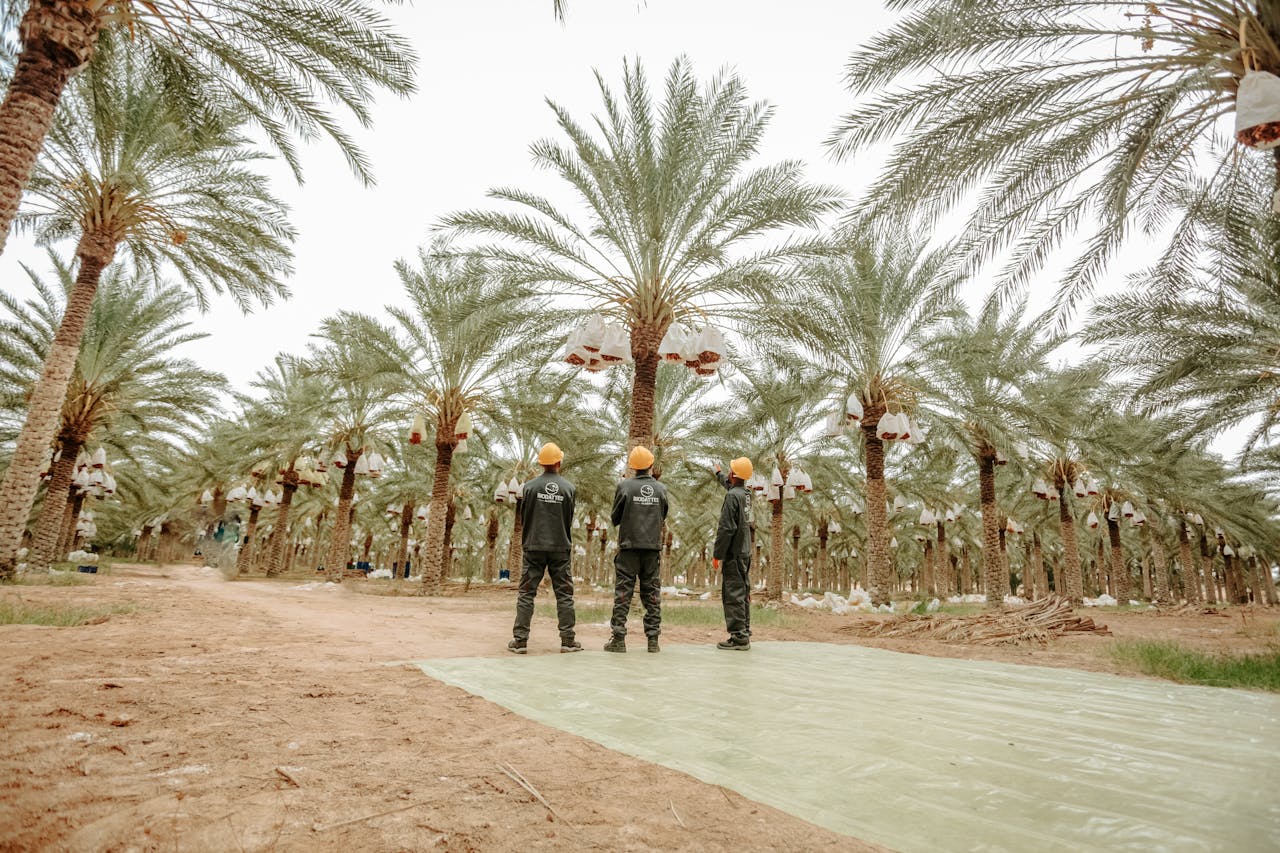Course Description
Welcome to the “GIS and Remote Sensing for Agricultural Resource Management” course. This 5-day intensive program is designed to equip participants with the necessary skills to effectively leverage Geographic Information Systems (GIS) and remote sensing technologies for managing agricultural resources. Participants will explore the application of GIS and remote sensing in a range of agricultural practices, such as crop monitoring, soil analysis, land use management, and water resource optimization. The course focuses on integrating spatial data and satellite imagery to help make informed decisions and improve agricultural productivity.
Throughout this course, you will gain practical knowledge on how to process, analyze, and apply satellite imagery and GIS data for sustainable agricultural practices. The program will also cover the integration of remote sensing with GIS tools, offering a holistic approach to improving farming techniques, resource allocation, and environmental sustainability.
Course Objectives:
- Understand the core concepts of GIS and remote sensing as applied to agricultural resource management.
- Gain insights into the various satellite imagery types and remote sensing data sources relevant to agriculture.
- Learn methods for acquiring, processing, and analyzing satellite imagery for practical agricultural use.
- Explore how GIS and remote sensing technologies support precision agriculture and crop management.
- Understand GIS techniques for land use mapping, soil analysis, and suitability evaluation for farming.
- Learn how to utilize GIS and remote sensing data for efficient water resource management and irrigation strategies.
- Master the art of interpreting and visualizing agricultural data using GIS software tools.
- Understand how GIS and remote sensing can aid in decision-making for agricultural planning and management.
- Study real-world case studies to understand best practices and applications in GIS and remote sensing for agriculture.
- Evaluate the benefits and challenges of using GIS and remote sensing technologies in agricultural resource management.
Organizational Benefits:
- Boost the capacity to apply GIS and remote sensing tools in agricultural management for improved decision-making.
- Improve monitoring and assessment of crops, soil, and land use for better resource management.
- Optimize agricultural productivity through precision farming techniques based on GIS and remote sensing data.
- Enhance water resource management through informed irrigation practices and drought forecasting.
- Enable better spatial planning and resource allocation through GIS-based land use analysis.
- Achieve more accurate site suitability assessments for agricultural development using GIS tools.
- Improve communication and visualization of agricultural data to stakeholders.
- Strengthen the capacity to integrate geospatial data into agricultural research and project implementation.
- Gain insights from case studies and successful real-world GIS and remote sensing applications in agriculture.
- Realize overall improvements in agricultural resource management, sustainability, and productivity.
Who Should Attend:
- Agricultural Extension Workers
- Farmers and Agricultural Managers
- Agricultural Scientists and Researchers
- Agricultural Consultants
- Land Use Planners
- Water Resource Managers
- Environmental Specialists
- GIS and Remote Sensing Professionals
- Government Officials and Policy Makers
- NGO and Development Organization Staff
- Anyone interested in applying GIS and remote sensing for agricultural purposes
Course Duration:
5 Days
Course Outline:
- Module 1: Introduction to GIS and Remote Sensing in Agricultural Resource Management
- Overview of GIS and remote sensing applications in agriculture.
- Key concepts and principles related to GIS and remote sensing in agriculture.
- Module 2: Satellite Imagery and Remote Sensing Data Sources for Agriculture
- Types of satellite imagery and remote sensing data used in agriculture.
- Methods for acquiring and sourcing agricultural satellite data.
- Module 3: Preprocessing and Analysis of Satellite Imagery for Agriculture
- Techniques for preprocessing and enhancing satellite imagery.
- Image classification methods for crop monitoring and vegetation analysis.
- Module 4: GIS Integration with Remote Sensing Data in Agriculture
- How to integrate remote sensing data into GIS for spatial analysis.
- Crop mapping and precision agriculture applications with GIS and remote sensing data.
- Module 5: Land Use Mapping and Soil Analysis using GIS
- Mapping land use changes and patterns with GIS tools.
- Soil analysis and suitability assessment for agricultural land.
- Module 6: Water Resource Management in Agriculture using GIS
- Water resource mapping and management through GIS.
- Utilizing GIS for irrigation planning and drought monitoring.
- Module 7: Visualization and Interpretation of Agricultural Data using GIS Software
- Techniques for visualizing agricultural data through GIS.
- Using geospatial analysis for effective decision-making in agriculture.
- Module 8: GIS and Remote Sensing in Precision Agriculture
- Application of GIS and remote sensing for precision agriculture practices.
- Integrating sensor data with GIS for optimized farming strategies.
- Module 9: Case Studies and Best Practices in GIS and Remote Sensing for Agriculture
- Examining real-world case studies of successful GIS and remote sensing applications.
- Learning best practices for agricultural resource management.
- Module 10: Challenges and Future Trends in GIS and Remote Sensing for Agricultural Resource Management
- Identifying challenges in implementing GIS and remote sensing in agriculture.
- Exploring emerging technologies and future trends in agricultural resource management.
- Module 11: Spatial Analysis for Agricultural Research and Development
- Using GIS for spatial analysis in agricultural research.
- Planning and assessing agricultural interventions through spatial analysis.
- Module 12: GIS and Remote Sensing in Agricultural Policy and Planning
- Using GIS and remote sensing for agricultural policy-making and planning.
- Data-driven decision-making for effective agricultural policies.
General Notes:
- Customized Training: Our courses can be tailored to meet the specific needs of participants.
- Language Proficiency: Participants should be proficient in English.
- Learning Approach: Presentations, hands-on exercises, online tutorials, and group work led by experienced facilitators with over 10 years of expertise.
- Certification: A certificate of completion from Stepsure Training and Research Institute will be awarded after successful completion.
- Location: Training will take place at Stepsure Training and Research Institute centers. We also offer in-house and online training options according to your schedule.
- Flexible Duration: Training duration is adaptable and can be adjusted to meet your needs.
- Onsite Training Inclusions: The course fee includes facilitation, training materials, two coffee breaks, a buffet lunch, and a certificate of completion. Participants are responsible for their travel expenses, visa arrangements, insurance, and personal costs.
- Additional Services: Accommodation, airport pickup, freight booking, and visa processing can be arranged upon request at discounted rates.
- Equipment: Tablets and laptops are available upon request for an additional fee.
- Post-Training Support: Enjoy one year of free consultation and coaching after completing the course.
- Group Discounts: Register with more than two people and receive discounts ranging from 10% to 50%.
- Payment Terms: Payment should be made before the course begins or as agreed, to ensure proper preparation for your training.
Contact Us:
- Email: info@stepsureresearchinstitute.org
- Phone: +254 723 482 495
- Website: www.stepsureresearchinstitute.org








